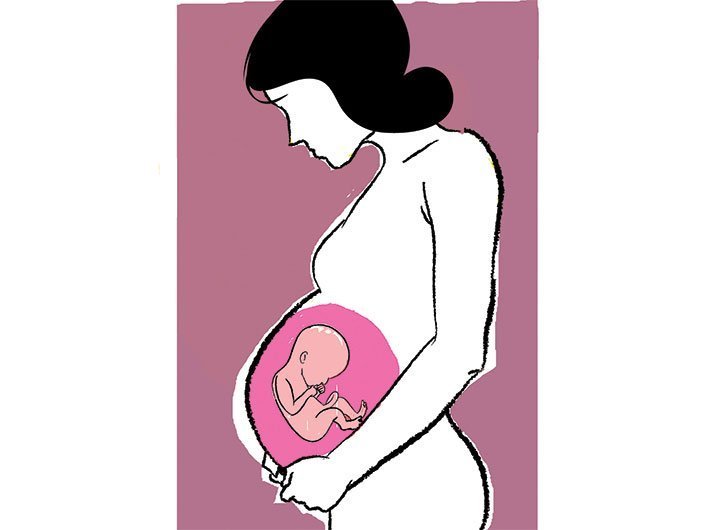Midwives are warriors on the front-line of health care, battling to ensure that women survive childbirth and that babies are born safely even in the most marginalised areas
A midwife has a key role to play in the healthcare system and she is in charge of prenatal care, the delivery, and postpartum services. However, retention of midwives, especially in rural areas, is a major challenge for many countries, one that threatens to negate all the hard work and resources being invested in their training.
In a way, these health workers are the warriors on the front-line of healthcare, battling to ensure that women survive childbirth and that babies are born safely even in the most marginalised areas.
There was a time when midwives were looked upon with pride and honour, but the British colonial implementations have led to the decline of social status of midwives in India over the years. However, with 72.2 % of India’s total population being rural (census 2011) and more than 60% domiciliary deliveries in India in these areas, the situation calls for adoption of skilled midwifery system and uplift the dignity of midwives in India.
According to TNAI (The Nursing Association of India) Journal, 2012, with current population of 1.2 billion, India needs a total of 2.4 million professionals with midwifery competencies.
Earlier, the importance given to the midwife and midwifery was lost due to a wrong practice. The Labour room register notes down who was the person who conducted the delivery, but when it comes to filling registers most registers show only doctors names. When the work of midwives is not recorded or reported, their work goes unacknowledged and unrewarded.
It is important to note that, there is no prohibition for a registered nurse midwife to conduct the delivery or to sign the register that she has conducted the delivery in an institution. Unfortunately, under the current policy of promoting institutional based deliveries, midwives are not paid or recognised as the birth attendant by the health authorities. Given this situation, most feel that it is essential to have a doctor present to get good quality care at the time of delivery and they strive for this.
This leads to wastage of money and the experience that these old hands possessed may altogether die out of neglect and social abuse.
The Indian Nursing Council, which is the sole curriculum and licensing body, has a curriculum that is followed throughout the country.
Unfortunately, currently the Indian midwifery content does not match the global standards recognized by the International Confederation of Midwives as a midwife. The government of India has also realised its importance and the Nursing and Midwifery Portal which is an initiative of Ministry of Health and Family Welfare is there for assistance and guidance. The mission of this online resource center is to provide a platform that connects the nurses, midwives state nursing councils, Indian nursing council, ministry of health and family welfare at state and central level (MOHFW), and other stake holders.
Also, the NRHM has started a short in-service course which provides nurses working in primary health facilities (Subcenters, PHCs and CHCs) with basic emergency obstetric care skills (Skilled Birth Attendant training). This became essential as it allows them to give vital obstetric first aid when there is no medical officer or gynaecologist present or on call.
The issue with the training programmes and career challenges is that there are not enough practised hands, no promotional activities and no separate direct entry midwifery training in India. Unless all these practices are revived, the effective change in standard is a farfetched dream.
If properly trained and recognized, midwives can transform the maternal healthcare system in India with proper apprenticeship training, examination and recognition which can give them better job opportunities. Apart from nursing, they can be part of midwifery cadre and join SOMI (The Society of Midwives India).
For the effective inclusion and revival of the system, the Indian nursing council act needs amendment and the government needs to take a stand for public health institution as there is non-availability of jobs for institutional midwives.
The significance of midwives can be gauged from India’s neighbouring countries like Nepal and Bangladesh which have achieved remarkable progress in reducing Maternal Mortality Rate (MMR) due to initiatives around midwives. The MMR declined to 170/100,000 in 2013, with an average annual reduction of 5%. Similarly, in Nepal, the MMR declined to 190 /100,000 in 2013 with an average annual reduction of 6%. Even Sri Lanka, Thailand, Malaysia and Nepal have separate roles and responsibilities of midwives and nurses in order to improve the condition to control MMR.
The bodies like the White Ribbon Alliance are running a movement for safe motherhood which builds alliances, strengthens capacity and inspires action to protect the lives of women and newborns around the world. Also, a network of Civil Society Organisations promote safe motherhood and implemented the project ‘Quality of Care’ at the national level with a focus in developing states like West Bengal, Jharkhand & Rajasthan. It advocated for ensuring improved quality of care to expectant mothers. All these bodies need to take up the revival of midwife system for better results and this can usher a movement in reviving and creating the additional capacity transforming the health care system in India.
(Dr. Leila Caleb Varkey is a noted public health researcher. She is senior adviser RMNCH, Centre for Catalyzing Change and project director, Quality of Care, White Ribbon Alliance India)
